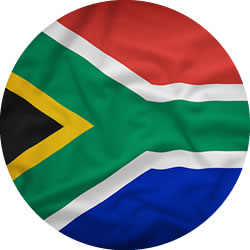Anthem, flag, orders, coat of arms and symbols celebrate diversity
Anthem, flag, orders, coat of arms and symbols celebrate diversity Estelle GreeffMany freedoms South Africans enjoy were hard won and we celebrate them in April each year.
April is Freedom Month in South Africa.
 During this month a day has been set aside to celebrate the dawn of freedom and democracy and the achievements of all South Africans in moving away from hatred, divisions and a painful history to build a common future together.
During this month a day has been set aside to celebrate the dawn of freedom and democracy and the achievements of all South Africans in moving away from hatred, divisions and a painful history to build a common future together.Vuk’uzenzele takes a look at the significance of this day and what it means to us as South Africans.
On 27 April 1994 South Africa had its first non-racial democratic election. A new government was elected under the leadership of the late President Nelson Mandela. A great deal has been achieved over the years, but more still needs to be done to improve our country and change the lives of all South Africans.
April is not only for reflecting on how far we have come as a country, but is also a time when South Africa celebrates its heroes and heroines through the National Orders. These are the highest awards that a country, through its President, bestows on its citizens and eminent foreign nationals.
The Constitution of South Africa
The Constitution was drafted in terms of Chapter 5 of the interim Constitution (Act 200 of 1993) and was first adopted by the Constitutional Assembly on 8 May 1996. It was signed into law on 10 December 1996.
Our national symbols
South Africa is unique in the fact that we can celebrate our diversity through our national symbols and national flag, the anthem of South Africa and the coat of arms.
The South African Flag is unique. It was designed by former South African State Herald, Fred Brownell, and first used on 27 April 1994.
The colours of the flag have no specific meaning therefore no universal symbolism should be attached to the colours of the flag.
The ‘V’ in the flag symbolises the coming together of different elements of South Africa and taking the road ahead together in unity.
 Flying the flag
Flying the flag
When the flag is displayed vertically against a wall, the red band should be to the left of the viewer with the hoist or the cord seam at the top. When it is displayed horizontally, the hoist should be to the left of the viewer and the red band at the top. When the flag is displayed next to or behind the speaker at a meeting, it must be placed to the speaker's right. When it is placed elsewhere in the meeting place, it should be to the right of the audience.
The National Coat of Arms
The national coat of arms, also known as the state emblem, is the highest visual symbol of the state.
The coat of arms is a central part of the great seal. A document with the imprint of the great seal has absolute authority because it means that it has been approved by the President of South Africa.
South Africa’s coat of arms was launched on Freedom Day in 2000. The elements on it are organised in such a way that it reflects stability and gravity.
The motto on the coat of arms, “!ke e: /xarra //ke” written in the Khoisan language, literally means diverse people unite.
The National Anthem
Our National Anthem is unique as it is sung in four languages.
The National Anthem was announced in 1997. It is a shortened, combined version of two anthems (‘Nkosi Sikelel’ iAfrika’ and ‘The Call of South Africa’/’Die Stem van Suid-Afrika’); sung between 1994 and 1997.
Our national symbols are as follows:
- National animal, the springbok
- National flower, king protea
- National tree, real yellowwood
- National bird, blue crane
- National fish, galjoen
